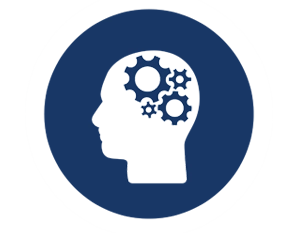Liquid Molding Monthly
How to Choose the Right Metal Cutting Saw for Your Fabrication Needs
In the world of metal fabrication, selecting the right tools can significantly impact efficiency and precision, making the decision of choosing the appropriate Metal Cutting Saw crucial. According to a recent market research report by Grand View Research, the global metal cutting tools market is expected to reach $6.4 billion by 2025, growing at a CAGR of 5.4%. This growth is driven by increasing demand from various sectors, including automotive, aerospace, and construction, all of which rely on high-quality cutting equipment to achieve optimal results.
With a plethora of options available, from band saws to circular saws, understanding the specific needs of your fabrication projects becomes imperative. Whether you are working with aluminum, steel, or other alloys, the right Metal Cutting Saw can enhance productivity, improve safety, and elevate the overall quality of your work, ultimately driving success in an increasingly competitive landscape.
Understanding Different Types of Metal Cutting Saws for Fabrication
When choosing the right metal cutting saw for fabrication needs, it's essential to understand the different types of saws available in the market. Metal cutting saws come in various forms, including band saws, circular saws, and plasma cutting machines, each designed for specific applications and material types. According to industry analyses, the North America sheet metal fabrication equipment market is projected to witness significant growth, highlighting the demand for high-quality cutting equipment capable of handling complex shapes and tough alloys.
The rise of advanced cutting technologies, such as handheld and mechanized plasma cutting machines, is transforming the fabrication landscape. These machines ease the process of cutting difficult materials with precision and speed, making them invaluable in various applications, from job shops to large-scale manufacturing. Recent reports suggest that the demand for these sophisticated tools is driven by the need for efficiency and enhanced operational capabilities, underscoring the importance of selecting the right equipment that aligns with specific fabrication requirements. As manufacturers increasingly seek to optimize production, understanding the characteristics and advantages of different metal cutting saws becomes crucial.
How to Choose the Right Metal Cutting Saw for Your Fabrication Needs
| Type of Metal Cutting Saw | Best for | Material Compatibility | Blade Type | Typical Applications |
|---|---|---|---|---|
| Miter Saw | Angled cuts | Aluminum, mild steel | TCT (Tungsten Carbide Tipped) | Frame cutting, trim |
| Band Saw | Straight cuts | Steel, brass, aluminum | Bi-metal or Carbide | Pipe cutting, structural steel |
| Chop Saw | Crosscuts | Mild steel, rebar | Abrasive cutting disc | Metal fabrication, construction |
| Plasma Cutter | Complex shapes | Mild steel, stainless steel | Plasma arc | Sheet metal, intricate cuts |
| Water Jet Cutter | No heat affected zone | All types of metals | Water mixed with abrasive | Precision cutting, artistic projects |
Key Factors to Consider When Selecting a Metal Cutting Saw
When choosing the right metal cutting saw for your fabrication needs, several key factors can significantly impact your decision. First and foremost, consider the material you will be cutting. Different saws are optimized for various metals, whether it be aluminum, steel, or exotic alloys like titanium. Understanding the properties of the material will help you select a saw that can deliver precision and efficiency while minimizing wear.
Next, take into account the saw’s cutting capacity and power. The size of the workpieces you plan to cut will dictate the necessary specifications of your saw. Additionally, power ratings are crucial; a higher wattage saw can handle tougher materials and larger volumes more effectively. Lastly, examine the ease of use and additional features such as adjustable blade speeds or cutting angles, which can enhance your workflow and improve cutting accuracy. Investing time into these considerations will not only meet your immediate fabrication requirements but also provide long-term benefits in your operations.
Evaluating Blade Material and Design for Optimal Performance
When selecting a metal cutting saw, the blade material and design play a pivotal role in achieving optimal performance for your fabrication needs. Initially, consider the material of the blade itself. High-speed steel (HSS) blades are versatile and suitable for a range of materials, providing sharpness and efficiency. However, for tougher metals, carbide-tipped blades are often superior. They maintain their cutting edge for longer periods and can handle high temperatures without losing hardness, which is critical for maintaining uninterrupted workflow.
Equally important is the design of the blade. Tooth geometry and spacing are key factors that determine the blade's cutting efficiency and finish quality. A blade with fewer teeth will cut faster but may produce rougher edges, while a blade with more teeth provides a smoother finish but may cut slower. It's essential to match the tooth pattern to the material being cut; for example, a variable pitch design can help reduce vibration and improve cutting speed on various metal types. Understanding these aspects will significantly enhance your capability to choose the right saw for your specific fabrication tasks, ensuring precision and durability in your projects.
Assessing Power and Speed Requirements for Your Projects
When selecting a metal cutting saw, assessing power and speed requirements is crucial for achieving optimal results in your fabrication projects. The American National Standards Institute (ANSI) recommends that the saw's horsepower should typically range between 3 to 15 HP, depending on the thickness and type of material being cut. High-power saws are essential for heavy-duty applications and tougher materials like stainless steel, where a consistent and robust cutting performance is necessary.
Speed is another vital factor; it's often measured in revolutions per minute (RPM). According to a recent industry report from Machining World, a higher RPM is preferable for thin materials, as it allows for cleaner cuts and reduced burr formation. For instance, a typical metal cutting band saw operates at about 100 to 300 RPM for softer metals like aluminum, while harder metals often require lower speeds around 50 to 200 RPM to prevent overheating and tool wear. Understanding these parameters helps fabricators choose the right saw that not only aligns with performance expectations but also enhances overall productivity and material longevity.
Budget Considerations: Choosing a Metal Cutting Saw That Fits Your Needs
When selecting a metal cutting saw, budget considerations play a crucial role in ensuring you make the right investment for your fabrication needs. Start by setting a realistic budget that considers not only the initial purchase price but also the long-term operational costs. Different types of metal saws, like band saws, circular saws, and chop saws, often come with varying price tags. While it might be tempting to go for the cheapest option, it's important to evaluate features and brand reliability, as these can significantly impact efficiency and durability.
Moreover, consider the type of materials and thicknesses you'll be cutting. If your fabrication projects require frequent cuts on thicker metals, opting for a higher-end saw with advanced features is worth the investment. In contrast, for lighter materials or occasional projects, a more budget-friendly option may suffice. Keep in mind that investing in a quality saw can save you money in the long run by reducing maintenance needs and increasing performance consistency. Balancing your budget with the saw's capabilities will help ensure you choose the right equipment tailored to your specific requirements.


100% Mercury Free
All of Hapco's formulations are completely free of Mercury.

50 Year Track Record
Hapco has been in business for over 50 years!
*NOTICE* Hapco will be will be closed on Monday, May 26th, in observance of Memorial Day. |
Privacy Overview
| Cookie | Duration | Description |
|---|---|---|
| cookielawinfo-checkbox-analytics | 11 months | This cookie is set by GDPR Cookie Consent plugin. The cookie is used to store the user consent for the cookies in the category "Analytics". |
| cookielawinfo-checkbox-functional | 11 months | The cookie is set by GDPR cookie consent to record the user consent for the cookies in the category "Functional". |
| cookielawinfo-checkbox-necessary | 11 months | This cookie is set by GDPR Cookie Consent plugin. The cookies is used to store the user consent for the cookies in the category "Necessary". |
| cookielawinfo-checkbox-others | 11 months | This cookie is set by GDPR Cookie Consent plugin. The cookie is used to store the user consent for the cookies in the category "Other. |
| cookielawinfo-checkbox-performance | 11 months | This cookie is set by GDPR Cookie Consent plugin. The cookie is used to store the user consent for the cookies in the category "Performance". |
| viewed_cookie_policy | 11 months | The cookie is set by the GDPR Cookie Consent plugin and is used to store whether or not user has consented to the use of cookies. It does not store any personal data. |


